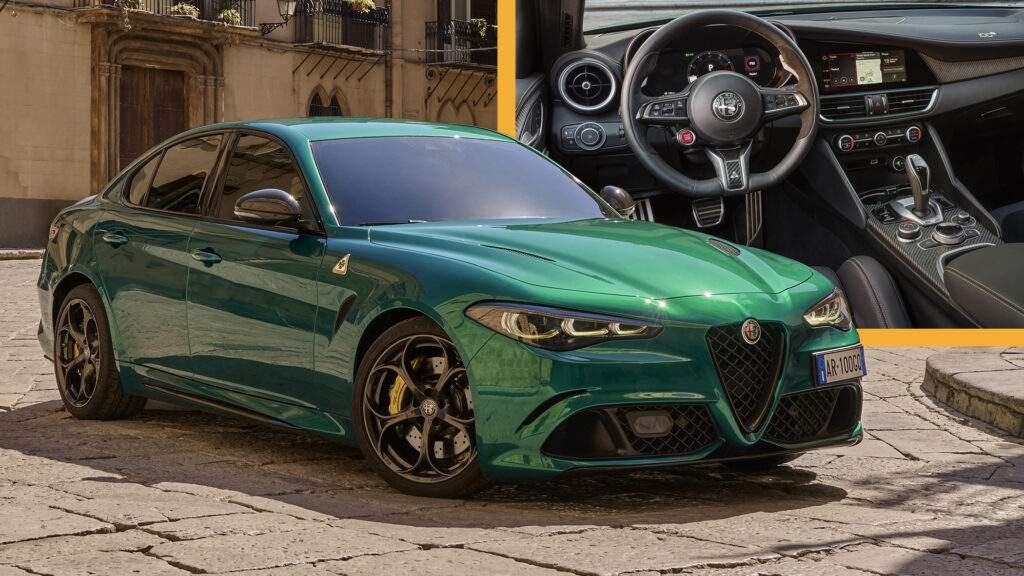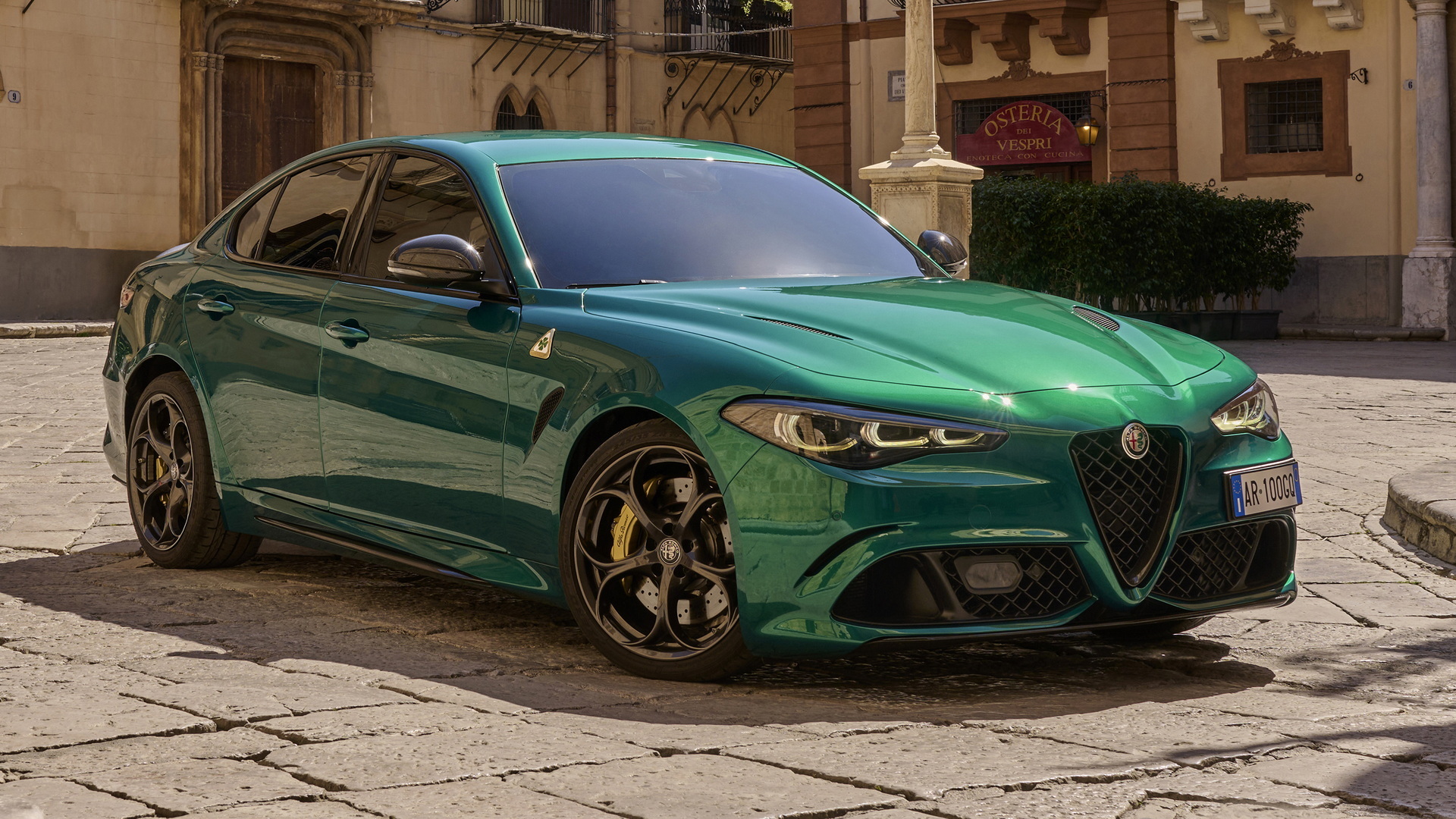Alfa Romeo recently facelifted the standard Giulia and Stelvio duo bringing them more in line with the newer Tonale, and it’s now the turn of the Quadrifoglio trims to benefit from similar styling and technological updates. The performance-focused models debuted with the Quadrifoglio 100° Anniversario special edition which is offered in a limited number of 100 units for each model featuring a small power bump.
Starting with the big news, the twin-turbocharged 2.9-liter V6 engine of the Quadrifoglio now produces 513 hp (383 kW / 520 PS) in the 100° Anniversario, representing an increase of 10 hp (7 kW / 10 PS) over the standard Quadrifoglio. Notably, this power bump is limited to the European, UK, and Chinese markets, which means that the US won’t get it.
Read: We Get Up Close To The 2023 Alfa Romeo Giulia And Stelvio Facelifts
The Giulia sends power to the rear wheels, while the Stelvio gets all-wheel drive, with both models exclusively equipped with an eight-speed ZF automatic gearbox that works together with a new, purely mechanical, limited-slip differential that takes its tune from the GTA. The cars are also expected to retain the adaptive suspension and carbon ceramic brakes of their predecessors.
The performance figures for the updated Alfa Romeo Giulia and Stelvio haven’t been disclosed yet, so it’s unclear whether the slight power bump results in any noticeable improvements. However, it’s worth noting that the current Giulia Quadrifoglio has a 0-100 km/h (0-62 mph) acceleration time of 3.9 seconds, while the Stelvio completes the same sprint in 3.8 seconds.
Visually, the Giulia and Stelvio Quadrifoglio benefit from the redesigned full-LED Matrix headlights with a tinted background. Other changes include the gold brake calipers behind the five-hole alloy wheels measuring 19 inches in the Giulia and 21 inches in the Stelvio, and the visible carbon finish on the grille and mirror caps. The Giulia retains the active carbon fiber front splitter, while both models feature an Akrapovich exhaust. Color options are limited to the Rosso Etna (red), Verde Montreal (green), and Nero Vulcano (black).
Both models have undergone some noticeable visual changes highlighted by the redesigned full-LED Matrix headlights with a tinted background. Other changes include the gold brake calipers behind the five-hole alloy wheels (measuring 19 inches in the Giulia and 21 inches in the Stelvio), visible carbon finish on the grille and mirror caps, and an Akrapovich exhaust. The Giulia retains its active carbon fiber front splitter, while both models offer color options limited to Rosso Etna (red), Verde Montreal (green), and Nero Vulcano (black).
Moving inside, we find a new 12.3-inch digital instrument cluster, which includes the Quadrifoglio-specific Race mode along with the Evolve, Relax, and Heritage modes of the other trims. The cluster has a single dial in the center, which allows the driver to focus on the rev counter. The infotainment screen remains the same size at 8.8 inches, but with special touches to increase the appeal, such as gold stitching, Alcantara leather upholstery for the bucket seats, a sports steering wheel, and plenty of carbon fiber throughout the cabin.
The Quadrifoglio badge made its debut on April 15, 1923, when Ugo Sivocci’s “Corsa” version of the Alfa Romeo RL won the Targa Florio. Now, exactly 100 years later, Alfa Romeo celebrates its heritage with a limited edition of updated models. The Alfa Romeo Giulia and Stelvio Quadrifoglio 100° Anniversario will be produced in a limited number of 100 units featuring special badging – the iconic four-leaf clover emblem has been given a “chromatic update.”
The models were photographed in Sicily alongside the classic RL, where Targa Florio took place. Alfa Romeo has also shared a video highlighting the special editions which you can watch below.

































































